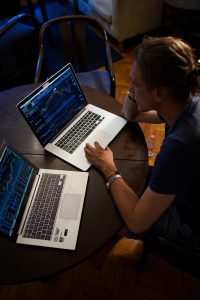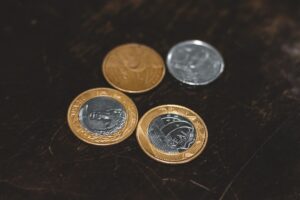Decoding Forex Acronyms: A Beginner’s Guide
The world of forex trading is filled with a myriad of acronyms that can be quite overwhelming for beginners. From technical indicators to economic data releases, understanding these acronyms is crucial to navigate the forex market successfully. In this beginner’s guide, we will decode some of the most commonly used forex acronyms to help you gain a solid understanding of the forex trading jargon.
1. Forex: Let’s start with the basics. Forex stands for foreign exchange, which refers to the decentralized global market where currencies are traded. It is the largest and most liquid financial market in the world, with trillions of dollars being exchanged daily.
2. PIP: PIP stands for Percentage In Point. It is the smallest unit of measurement in forex trading, representing the fourth decimal place in most currency pairs. For example, if the EUR/USD currency pair moves from 1.1500 to 1.1501, it has moved by 1 pip.
3. Lot: A lot refers to the standardized trading size in forex. It represents the volume of a trade. The standard lot size is 100,000 units of the base currency. However, there are also mini (10,000 units) and micro (1,000 units) lots available for smaller traders.
4. Bid and Ask: When you trade forex, you will encounter two prices: the bid and ask price. The bid price is the price at which you can sell the base currency, while the ask price is the price at which you can buy the base currency. The difference between the bid and ask price is called the spread.
5. Leverage: Leverage allows traders to control larger positions with a smaller amount of capital. It is expressed as a ratio, such as 1:100. This means that for every dollar of capital you have, you can control $100 in the forex market. While leverage can amplify profits, it can also magnify losses, so it should be used with caution.
6. Stop Loss (SL) and Take Profit (TP): Stop loss and take profit are orders that you can set to automatically close your trade at a certain price level. A stop loss order is used to limit potential losses by closing the trade if the market moves against you. A take profit order, on the other hand, is used to secure profits by closing the trade when the market reaches a desired level.
7. Moving Average (MA): Moving averages are technical indicators used to identify trends and smooth out price fluctuations. They calculate the average price of a currency pair over a specific period, such as 50, 100, or 200 days. Traders use moving averages to determine entry and exit points in the market.
8. Gross Domestic Product (GDP): GDP is a key economic indicator that measures the total value of all goods and services produced within a country’s borders. It is released on a quarterly basis and is closely watched by forex traders as it provides insights into the health of an economy.
9. Non-Farm Payrolls (NFP): NFP is a monthly report released by the U.S. Bureau of Labor Statistics, which provides information on the number of jobs added or lost in the non-farm sector. It is a significant economic indicator that can have a substantial impact on the forex market, particularly the U.S. dollar.
10. Central Bank: A central bank is a financial institution responsible for managing a country’s money supply, interest rates, and exchange rates. Central banks, such as the Federal Reserve (Fed) in the United States or the European Central Bank (ECB), play a crucial role in influencing the forex market through their monetary policies.
Understanding these forex acronyms is essential for any beginner looking to dive into the world of forex trading. It allows traders to communicate effectively, interpret market information accurately, and make informed trading decisions. While this guide covers some of the most commonly used acronyms, there are many more to explore as you progress in your forex trading journey.





